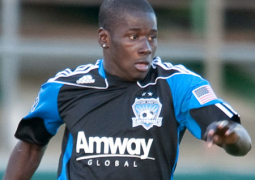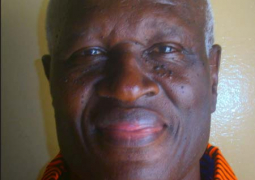
The
Looting Machine, warlords, tycoons, smugglers and the systematic theft of
Africa’s wealth, Tom Burgis, Collins, 2016, 324 pages
This
book should be a timely read for those who will be entrusted with the task of
probing the whereabouts and whereof of the alleged loot of ex-president Jammeh.
Since our despot fell from power and fled into exile, there have been a lot of
media reports on how the rosary-carrying despot allegedly siphoned off millions
from our coffers. If true, this new book by a prize winning Financial Times
reporter Tom Burgis, should explain why it is so easy for bad rulers to steal
from their impoverished people.
This
book is a searing exposé of the global web of traders, bankers, middlemen,
despots, tyrants, corporate raiders, marabouts, mistresses and all kinds of bad
and nasty wheeler-dealers who steal Africa’s wealth. In this book, the author
contends that national treasury looters work in tandem with a wide web of
conspirators to enable them make Africa poor. He also explains how Western
multinationals, Chinese corporations, (p. 81, 111) and Asian mafias all are
working with corrupt looters to steal Africa’s resources. There are secretive
networks at work to steal from Africa.
In
chapter one, the author explains how a tiny clique in Angola has successfully
siphoned all the proceeds from the once booming oil and diamond mining
concessions to feather their own nests, leaving the ordinary Angolan poorer.
The few families around the President Dos Santos ‘embarked on the privatization
of power’ and took ‘personal ownership’ of Angola’s wealth (p.10). As a result,
according to Burgis, Dos Santos’ daughter became Africa’s first billionaire in
2013! Indeed, between 2007 and 2010 the Angolan elite stole USD32 billion!
Equally, telling is the fact that the rulers are able to steal only after
inflicting fear into the people so that no one dares ask questions, while the
systematic looting of the resources takes place. Gambians will also be familiar
with this: create fear and terror first, and then start the looting (p.12).
In
chapter 5, the author narrates the sickening corruption in Guinea under the
late unlamented tyrant Lasana Conte. As he lay dying in 2008, he still entered
into a contract with shady Western companies to exploit Guinea’s rich bauxite
deposits. His youngest wife got a bribe of USD 12 million from this company so
that her dying husband will agree to the deal (p.109). In Guinea, what belongs to the state belonged
to Conte!
The
author further reveals that the looting of Africa’s resources wreaks havoc not
only on the economy but also on the fragile ecosystem and environment. He cites
how oil companies have poisoned the once serene creeks of the Niger delta in
Nigeria such that entire communities have been turned into toxic crannies where
nothing thrives, and everything is sick. It is apparent that Africa has
30% of the world’s minerals and oil; 14%
of the world’s population and has 43% of the world’s poor. ‘Why is the richest
continent also the poorest’? This book answers the question very well. It is
highly recommended read for anyone interested in the fate of Africa as a
continent.
Available
at Timbooktoo, tel 4494345




